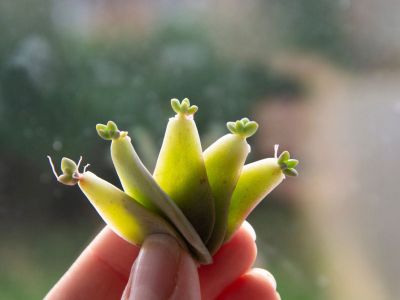Learning how to propagate plants just relies on knowledge of some of the most common ways plants reproduce and a bit of info on the ways to utilize each method.
Propagation Basics
If you ever started a seed in grade school, you probably know the fundamentals of this most basic way to grow a plant. However, there are other propagation basics for certain varieties of plants that go outside of seed starting. Seeds are the first way of propagating for beginners, but there are a variety of other ways to start new plants. Seed propagation is probably the style most of us are familiar with, but it isn’t the only way. In most cases, seed is simply sown in soil, kept warm and moist, and will grow. Some seeds need special preparation though. There are those that need to be vernalized or given a long chilling period. Others need scarification or damage to the hull to help seedlings escape, and others need stratification or a brief period of cooler temperatures. To know which your seed needs, consider what its cold tolerance is and where it grows natively. This will give you an idea of what treatment your plant seeds will require. If you haven’t got a clue, try several seeds in a different manner and see which works best. You can often start seed more quickly by wrapping it in a wet paper towel in a baggie for a few days. Soon you will see roots and the seed will sprout, ready for soil.
How to Propagate Plants Other Ways
Seeds aren’t always the answer. Some plants, such as fruit trees, need grafting to produce fruit that is identical to the parent plant. Others will propagate best through division. Most perennials are in this category and can be separated to make new plants. Still other plants are easier to begin from cuttings of the parent plant, or in the case of woody varieties, from stem cutting or air layering. Not to get too complex, but a cutting is from an herbaceous species and can root in water. Stem cutting is a process where you place the cut end in moistened medium, while with air layering a wound is made in the wood, packed with moist sphagnum moss, and covered in plastic to root.
Propagating for Beginners
The easiest propagation for beginners is from seed or cuttings. In the case of seed, pay attention to the seed packet. It should say when to start the seed, how deep to plant, whether it is best to start indoors or out, and when to plant outside if begun indoors. Know your zone so you can understand the zone map. Use good seed starting soil or make your own sterilized mixture to reduce the chance of fungal disease. With cuttings, your best chance is from young plant material. Generally, all you have to do is place the cutting in a glass of fresh or denatured water. Change the water daily. Once you see roots, plant the new start in fresh potting soil. These easy methods are almost fool proof provided the new plants have sun, warmth, and consistent moisture.
